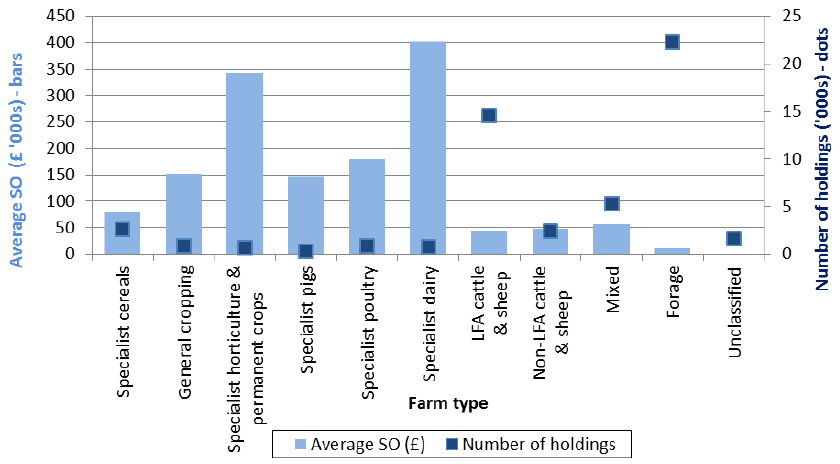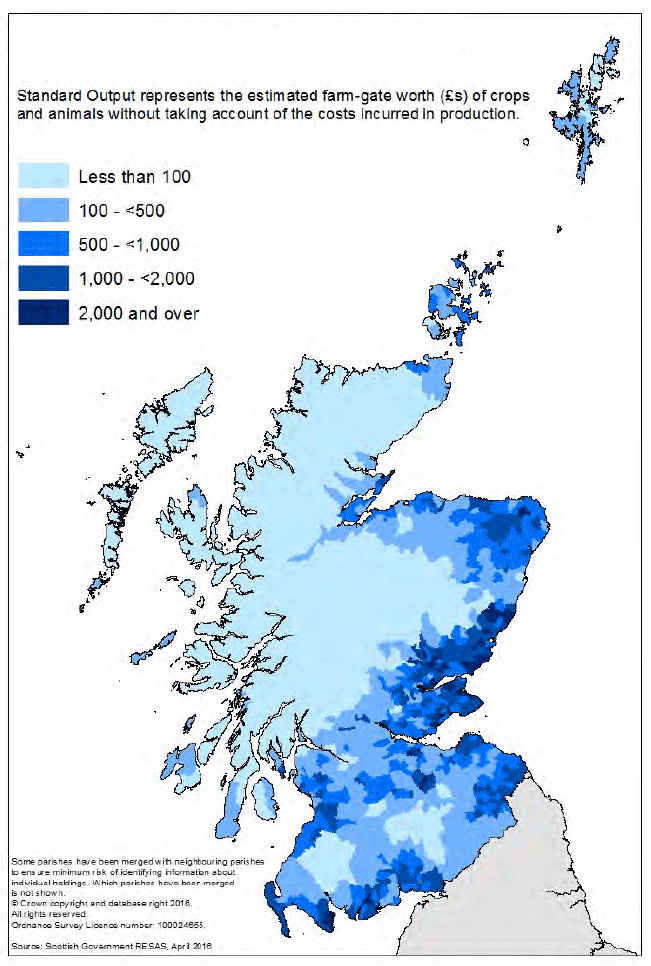Economic Report on Scottish Agriculture, 2016
Presents an overall picture of Scottish agriculture using data from the various agricultural surveys that RESAS manage.
This document is part of a collection
2.7 Standard Outputs by farm type (Table C23, C25)
Chart 2.6 shows that dairy holdings had the highest average SO at £402,329. This was followed by horticulture (£343,299), some way ahead of poultry (£180,222). and general cropping (£151,777). Other than unclassified holdings (which generate no Standard Output value), forage holdings had the lowest average SO (£11,286). Lowland cattle & sheep (£47,936), and LFA cattle & sheep (£44,684) holdings also had relatively low average SO values. Remember that the figures here are only of value for comparison, since they are based on notional standard values based on a five year average centred on 2010.
It should be noted, however, that for most farm types these results are derived from a large number of holdings with a small amount of agricultural activity and a few very large holdings with a large amount of activity. The number of holdings are illustrated in chart 2.6 by the dark blue dots. It should also be noted that, since SOs do not take into account costs, those farm types that have relatively high costs per output will appear to be faring differently, relative to other farm types, than would be the case if costs were also included. For data on actual incomes, see section 3.4.
Chart 2.6: Average Standard Output by farm type, June 2015

Looking at the total contribution each farm type made to total SOs in Scotland, table C23 (see also chart 7.6) shows that cattle & sheep ( LFA) and dairy holdings accounted for the largest shares of SO (27 per cent and 13 per cent respectively, though they account for 28 per cent and only two per cent of the holdings) followed by mixed holdings (13 per cent) and forage (ten per cent). All other farm types each contributed less than ten per cent to total SO.
Table C25 (and chart 7.7) shows that Grampian and Tayside contributed most to Scotland's total SO, accounting for around 19 and 18 per cent respectively, followed by Dumfries and Galloway (14 per cent). All other sub-regions each contributed less than ten per cent of the total. This partly reflects the farm type distributions in these sub-regions as well as the size of these geographical areas.
Map 6 shows the average SO per hectare for each parish. It illustrates the higher output in the east, and along and to the south of the central belt.
Map 6: Average Standard Output per hectare, by parish, 2015

Contact
There is a problem
Thanks for your feedback